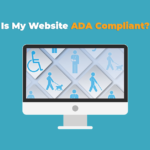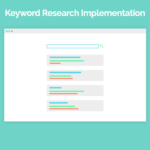In January 2019, three Central Florida cities – Lake Mary, Oviedo and Longwood – removed many of their public resources from their websites.
The reason for this was a shocking development that came as a surprise to many in local government:
A string of lawsuits targeting municipalities in Florida accused city websites of not following the requirements of the Americans with Disabilities Act, or ADA. And even worse for those cities, they were forced to settle for thousands of dollars in damages.
And it’s not just Florida either. ADA lawsuits have been filed against municipalities in New York, California, Minnesota – all over the country.
Wait, websites? ADA Compliant websites? What’s going on here?
When Did These Lawsuits Start?

For Central Florida, this all started in October 2018, when a Daytona Beach man filed a complaint against Flagler County, alleging that many of their online resources were incompatible with his screen reading software.
According to the Daytona Beach Center for the Visually Impaired, this is a common issue. Screen readers struggle to read PDFs – and much of the Flagler County website was in this format.
Because of this incompatibility, so the lawsuit alleges, the visually impaired were uniquely unable to access online resources from the government website.
But where did this come from? To most people, ADA is better known for its requirements for brick-and-mortar establishments: handicapped parking, ramps instead of just stairs, elevators and so on.
Very few people were aware that their websites were also subject to ADA compliance.
Since When Does ADA Cover Websites?
ADA was first passed in 1990 – long before the Internet was well-known outside of universities and select circles of tech nerds. But since that date, online information has become paramount to how many of us interact with the world.
And that hasn’t gone unnoticed by the federal government either.
In fact, it’s been made explicitly clear – directly by the Department of Justice, as well as by numerous federal courts – that websites are covered by the requirements of the original ADA regulations.
Nowhere is that clearer than in the number of ADA lawsuits targeting municipal governments in places such as Florida, New York and California.
What Can Webmasters Do?

So websites are a part of ADA – but what does that mean for local governments?
Well, it means that if your website isn’t ADA accessible right now, then you’re liable for litigation at any moment.
This is why Central Florida cities are defaulting to removing everything from their website that’s not accessible to those using assistive devices or with disabilities.
The logic here is, if it’s not online in the first place, it can’t be considered uniquely inaccessible to those with disabilities.
Of course, this is not a permanent solution.
These governments are undergoing a tremendous effort to completely transform their websites. And they don’t have a moment to spare.
ADA compliance takes a long time in terms of web design. Particularly for websites that are older, or have a lot of resources online.
Fortunately, the official ADA.gov website put up a (preliminary) checklist to gauge whether or not a website is ADA compliant. Nothing on this checklist is meant to be comprehensive, of course. But it’s better than being completely in the dark about the situation.
Just a few examples of ADA issues relating to government websites include:
- File formats – such as the PDF issue with Flagler County
- Images missing ALT text that can be read by a screenreader
- Videos that don’t have closed captioning for the hearing impaired
- Or, conversely, video material that doesn’t convert text into an audio format for those who are blind
Part of the challenge in becoming ADA compliant is the fact that there are so many accessibility issues that can appear, and many web designers don’t anticipate the problems that could affect people who are blind, deaf or have motor impairments.
The reality is, though, that websites that aren’t ADA compliant need to become so – fast.
Do These Lawsuits Affect Businesses Too?
Small business owners might be thinking “Well, that’s terrifying! I certainly couldn’t afford a $10,000 lawsuit – does this affect me too?”
Well, it’s not really clear as to what degree all of this affects private enterprise. Particularly small companies. But a good rule of thumb is that if you’re:
- Public-oriented, that is, you offer B2C services, especially those counted as “Publicly beneifical”
- Larger than 15 employees
- A private contractor operating for or in partnership with, a local or federal agency
Then you should assume you need an ADA compliant website. Immediately.
But let’s be frank: even if you’re smaller, or B2B, or don’t work with the government, you’re probably still at risk.
The only way to avoid a lawsuit is to follow best practices from the beginning.
With so many businesses and so many governments, most of whom are not following compliance guidelines as is, lawyers are more likely to go after low-hanging fruit. If you’re already compliant, or mostly compliant, they may be less likely to target you.
Now, we know, ADA compliant design takes a long time – and it’s expensive.
But ask yourself this:
Would you rather pay thousands of dollars now and deter any future ADA lawsuits?
Or would you rather pay even more money in the future, and then still have to shell out money to fix your website?
We know which one we would pick at least.
Besides, plenty of companies are willing to offer low-cost, or even free, ADA audits.
So, if you have even a single doubt about your website’s compliance:
Get in touch with a web design agency who knows the ins and outs of ADA requirements today.












Leave a Reply